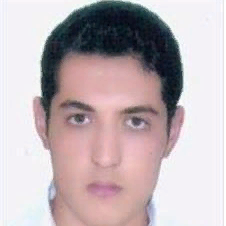International Journal of Image, Graphics and Signal Processing (IJIGSP)
IJIGSP Vol. 11, No. 1, 8 Jan. 2019
Cover page and Table of Contents: PDF (size: 1392KB)
Thresholding or Bayesian LMMSE/MAP Estimator, which one Works Better for Despeckling of True SAR Images?
Full Text (PDF, 1392KB), PP.1-11
Views: 0 Downloads: 0
Author(s)
Index Terms
Synthetic aperture radar (SAR), despeckling, thresholding, Bayesian estimation, contourlet transform, optimization, edge detection.
Abstract
In synthetic aperture radar (SAR) imaging system speckle is modeled as a multiplicative noise which limits the performance of SAR image processing systems. In the literature, several SAR image despeckling algorithms have been presented, among them two simple, yet effective, approaches are using thresholding and Bayesian estimation in transform domains. In this article, we try to provide proper answer to this question: which one of these two despeckling methods works better? To this aim, we first introduce a new thresholding function with two thresholds, and show that when thresholds are determined through optimization procedures, an improved denoising performance in terms of joint speckle removal and edge saving efficiencies can be achieved. However, still a Bayesian LMMSE/MAP estimator can provide greater speckle removal efficiency in test images with high speckle power, and some thresholding methods produce better edge saving efficiency. Hence, aiming at joint exploitation of the superior edge saving ability of thresholding estimator and greater speckle removal efficiency of Bayesian estimator, we next propose the idea of using a combined despecking algorithm. The new denoising methods are applied for despeckling of true SAR images in the nonsubsampled contourlet transform domain and the situations they achieve superior performance have been highlighted.
Cite This Paper
Iraj Sardari, Jalil Seifali Harsini, " Thresholding or Bayesian LMMSE/MAP Estimator, which one Works Better for Despeckling of True SAR Images?", International Journal of Image, Graphics and Signal Processing(IJIGSP), Vol.11, No.1, pp. 1-11, 2019. DOI: 10.5815/ijigsp.2019.01.01
Reference
[1]C. Oliver and S. Quegan, Understanding Synthetic Aperture Radar Images. Boston, MA: Artech House, 1998.
[2]Lee, J. S., L. Jurkevich, P. Dewaele, P. Wambacq, and A. Oosterlinck, “Speckle filtering of synthetic aperture radar images: A review,” Remote Sensing Reviews, Vol. 8, No. 4, 313-340, 1994.
[3]Frost, V. S., J. A. Stiles, K. S. Shanmugan, and J. C. Holtzman, “A model for radar images and its application to adaptive digital filtering of multiplicative noise,” IEEE Transactions onPattern Analysis and Machine Intelligence, Vol. 4, No. 2, 157-166, Mar. 1982.
[4]M. Dai, C. Peng, A. K. Chan, and D. Loguinov, “Bayesian wavelet shrinkage with edge detection for SAR image despeckling,” IEEE Trans. Geosci. Remote Sens., vol. 42, No. 8, pp. 1642-1648, Aug. 2004.
[5]M. N. Do and M. Vetterli, “The contourlet transform: An efficient directional multiresolution image representation,” IEEE Trans. Image Process., vol. 14, no. 12, pp. 2091-2106, Dec. 2005.
[6]A. L. Cunha, J. Zhou, and M. N. Do, “The Nonsubsampled contourlet transform: theory, design and applications,” IEEE Trans. Image Process., vol. 15, no. 10, pp. 3089-3101, 2006.
[7]M. Hashemi and S. Beheshti, “Adaptive Bayesian denoising for general Gaussian distributed (GGD) signals”, IEEE Trans. Signal Process., vol. 62, no.5, pp. 1147-1156, March 2014.
[8]F. Argenti, T. Bianchi, G. M. Di Scarfizzi, and L. Alparone, “LMMSE and MAP estimators for reduction of multiplicative noise in the nonsubsampled contourlet domain,” Elsevier Signal Process., vol. 89, no. 10, pp. 1891-1901, Oct. 2009.
[9]D. L. Donoho, “De-noising by soft-thresholding,” IEEE Trans. Inf. Theory, vol. 41, no. 3, 1995.
[10]S. Chang, B. Yu, and M. Vetterli, “Adaptive wavelet thresholding for image denoising and compression,” IEEE Trans. Image Process., vol. 9, pp. 1532-1546, 2000.
[11]R. Tao, H. Wan, and Y. Wang “Artifact-free despeckling of SAR images using contourlet,” IEEE Geosci. Remote Sens. Lett., vol. 9, no. 5, Sept. 2012.
[12]J. J. J. Babu, and G. F. Sudha, “Non-subsampled contourlet transform based image denoising in ultrasound thyroid images using adaptive binary morphological operations,” IET Computer Vision, vol. 8, no. 6, pp. 718-728, 2014.
[13]X. P. Zhang, “Thresholding neural network for adaptive noise reduction,” IEEE Trans. Neural Networks, vol. 12, no. 3, pp. 567-584, 2001.
[14]M. Nasri, H. Nezamabadi-pour, “Image denoising in the wavelet domain using a new adaptive thresholding function,” Elsevier Neurocomputing, vol. 72, pp. 1012-1025, 2009.
[15]M. Chuia, Y. Fengb, W. Wanga, Z. Lic and X. Xua, “Image denoising method with adaptive Bayes threshold in nonsubsampled contourlet domain,” in Proc. AASRI Conference on Computational Intelligence and Bioinformatics, Changsha, China, 2012, Also appeared in Elsevier AASRI Procedia, vol. 1, pp. 512-518.
[16]F. Argenti, T. Bianchi, G. M. di Scarfizzi, and L. Alparone, “SAR image despeckling in the undecimated countourlet domain: a comparision of LMMSE and MAP approaches,” in Proc. IGARSS, Boston, USA, July 2008.
[17]F. Argenti, T. Bianchi, A. Lapini, and L. Alparone, “Fast MAP despeckling based on Laplacian–Gaussian modeling of wavelet coefficients,” IEEE Geosci. Remote Sensing Lett., vol. 9, no. 1, pp. 13-17, Jan. 2012.
[18]D. L. Donoho and I. M. Johnstone, “Adapting to unknown smoothness via wavelet shrinkage,” Journal of the American Statistical Association, vol. 90, no. 432, pp. 1200-1224, Dec. 1995.
[19]F. Argenti, T. Bianchi, and L. Alparone, “Multiresolution MAP despeckling of SAR images based on locally adaptive generalized Gaussian PDF modeling,” IEEE Trans. Image Process., vol. 15, no. 11, pp. 3385-3399, Nov. 2006.
[20]A. Shamsoddini, and J.C. Trinder, “Image texture preservation in speckle noise suppression,” in Proc. ISPRS TC VII Symposium, vol. 38, Vienna, Austria, July 2010, pp. 239-244.
[21]J. Canny, “A computational approach to edge detection,” IEEE Trans. Pattern Anal. Machine Intell. vol. PAMI-8, pp. 679-698,1986.
[22]R. Touzi, “A review of speckle filtering in the context of estimation theory,” IEEE Trans. Geo. And Remote Sensing, vol. 40, no. 11, pp. 2392-2404, Nov. 2002.
[23]F. Argenti, A. Lapini, T. Bianchi and L. Alparone, “A tutorial on speckle reduction in synthetic aperture radar images,” IEEE Geoscience and Remote Sensing Magazine, vol. 1, no. 3, pp. 6-35, Sep. 2013.
[24]W. Zhang, F. Liu, L. Jiao, B. Hou, S. Wang, and R. Shang, “SAR image despeckling using edge detection and feature clustering in bandelet domain,” IEEE Geosci. Remote Sens. Lett., vol. 7, no. 1, pp. 131-135, Jan. 2010.
[25]https://directory.eoportal.org/web/eoportal/satellite-missions/k/ kompsat-5.

